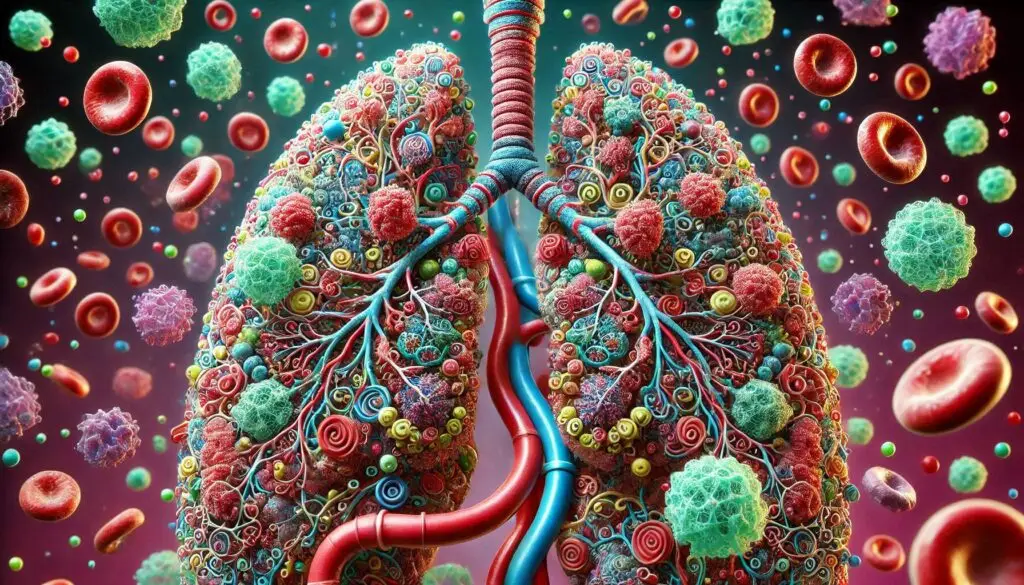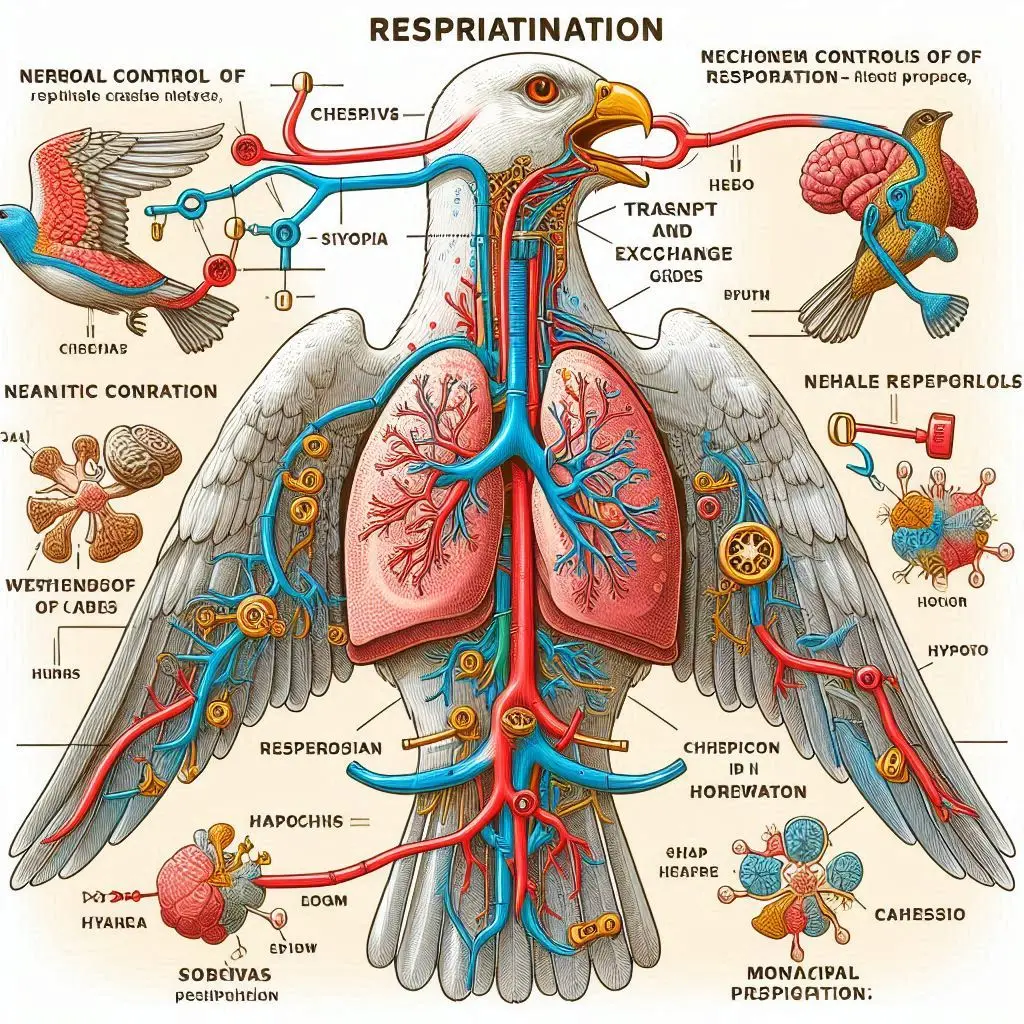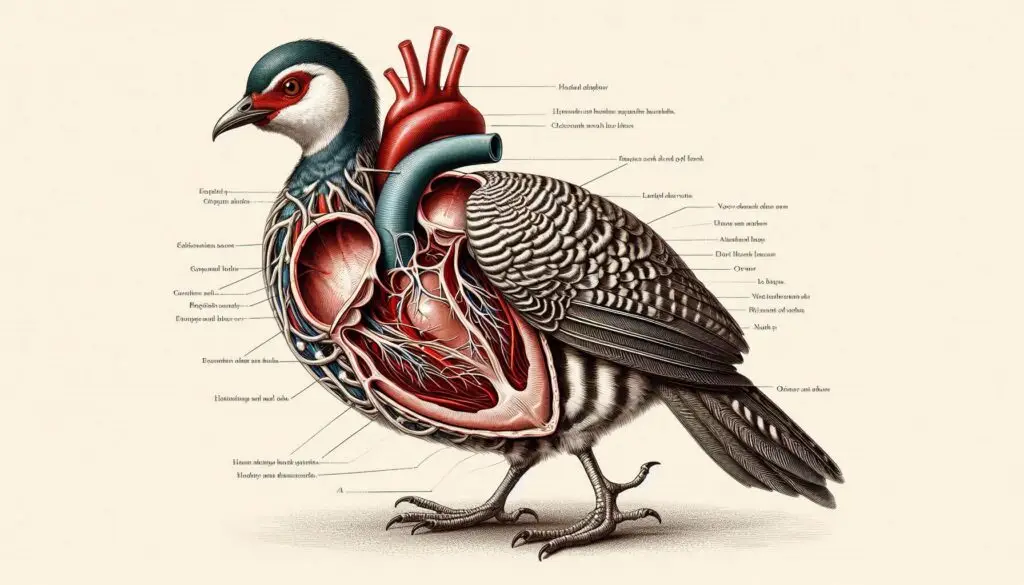Alveoli

Introduction to Alveoli in Livestock
The lungs are vital organs for all mammals, including livestock. Within the lungs, alveoli play a crucial role in gas exchange. Understanding how these structures function can help farmers and veterinarians maintain animal health. This article will delve into the anatomy of alveoli in livestock, their functions, and common respiratory issues that affect various species.
What Are Alveoli?
Alveoli are tiny air sacs located at the end of bronchioles in the lungs. They are essential for the exchange of oxygen and carbon dioxide. Each alveolus is surrounded by a network of capillaries that facilitate this gas exchange. In livestock, the efficiency of this process can significantly impact overall health and productivity.
Importance of Alveolar Health
Healthy alveoli ensure that animals receive enough oxygen for their metabolic needs. Poor lung function can lead to hypoxia (low oxygen levels), which can affect growth, reproduction, and milk production. For more information on the importance of respiratory health in livestock, you can visit the American Association of Bovine Practitioners.
Structure of Alveoli in Different Livestock Species
Bovine (Cattle) Alveoli
Cattle have a unique lung structure characterized by lobulation. The right lung has four lobes, while the left lung has three. The alveolar walls are relatively thick compared to other species. This anatomical feature helps limit the spread of infections but can also lead to issues like pulmonary hypertension.
Key Features:
- Lobulated Structure: Cattle lungs are divided into lobes.
- Thicker Walls: This may protect against disease but can reduce compliance.
- Pores of Kohn: These small openings between alveoli are less common in cattle.
For a deeper understanding of bovine respiratory anatomy, check out the Merck Veterinary Manual.
Caprine (Goat) Alveoli
Goats have a slightly different lung structure than cattle. Their alveoli tend to be more spherical and have a larger surface area relative to volume. This adaptation aids in efficient gas exchange.
Key Features:
- Spherical Shape: Enhances surface area for gas exchange.
- Average Diameter: Goat alveoli typically measure around 45 µm.
- Histological Similarities: Similar cell types as found in other mammals.
For more information on goat respiratory systems, visit the University of Kentucky’s College of Agriculture.
Porcine (Pig) Alveoli
Pigs exhibit distinct lobulation with four lobes on the right side and two on the left. Their lungs are adapted for their specific metabolic needs.
Key Features:
- Distinct Lobes: Pigs have a clear division between lung lobes.
- Adapted Structure: Their lungs support high metabolic rates.
- Efficient Gas Exchange: Adaptations allow for effective oxygen uptake.
For additional insights into porcine respiratory health, refer to the National Pork Board.
Functionality: How Alveoli Work
Gas Exchange Process
The primary function of alveoli is to facilitate gas exchange between the air and blood. This process involves:
- Inhalation: Air enters through the trachea and bronchi into the alveolar sacs.
- Oxygen Diffusion: Oxygen from inhaled air diffuses through the thin walls of the alveoli into the bloodstream.
- Carbon Dioxide Removal: Carbon dioxide from the blood moves into the alveoli to be exhaled.
This process is vital for maintaining proper oxygen levels in livestock. Any disruption can lead to serious health issues.
Factors Affecting Gas Exchange Efficiency
Several factors can influence how effectively gas exchange occurs:
- Alveolar Surface Area: A larger surface area allows for more efficient gas exchange.
- Thickness of Alveolar Walls: Thicker walls can slow down diffusion rates.
- Presence of Surfactant: Surfactant reduces surface tension within alveoli, preventing collapse.
For more detailed information about gas exchange mechanisms, you can refer to PubMed Central.
Common Respiratory Diseases Affecting Livestock
Bovine Respiratory Disease (BRD)
Bovine Respiratory Disease is one of the most significant health concerns in cattle. It often results from viral infections followed by bacterial infections.
Symptoms:
- Coughing
- Nasal discharge
- Fever
Early intervention is critical for management. For more on BRD, visit the Beef Cattle Research Council.
Caprine Respiratory Disease Complex (CRDC)
Goats are also susceptible to respiratory diseases that can affect their overall health and productivity.
Symptoms:
- Labored breathing
- Coughing
- Weight loss
Management practices include vaccination and proper housing conditions. For further reading on goat respiratory diseases, check out the Goat Health Advisory Service.
Porcine Respiratory Disease Complex (PRDC)
Pigs face a range of respiratory diseases collectively known as PRDC. These diseases often stem from multiple pathogens.
Symptoms:
- Coughing
- Sneezing
- Reduced growth rates
Preventive measures include vaccination and good management practices. More information is available at the American Association of Swine Veterinarians.
Maintaining Healthy Alveoli in Livestock
Importance of Good Management Practices
Maintaining healthy lungs in livestock requires good management practices:
- Ventilation: Ensure proper airflow in barns to reduce humidity and ammonia levels.
- Nutrition: Provide balanced diets rich in vitamins A and E to support immune function.
- Vaccination: Implement vaccination programs against common respiratory pathogens.
For comprehensive guidelines on managing livestock health, refer to the National Animal Health Monitoring System.
Regular Health Check-Ups
Regular veterinary check-ups can help identify respiratory issues early on. Monitoring for signs like coughing or nasal discharge is essential.
Key Practices:
- Schedule routine veterinary visits.
- Keep records of any respiratory issues observed.
For more information on veterinary care for livestock, visit the American Veterinary Medical Association.
Conclusion
Understanding the structure and function of alveoli in livestock is crucial for maintaining animal health. By recognizing how these structures work and what affects their efficiency, farmers can implement better management practices to ensure optimal respiratory health.
More from Veterinary Anatomy:
Cell Inclusions




Responses